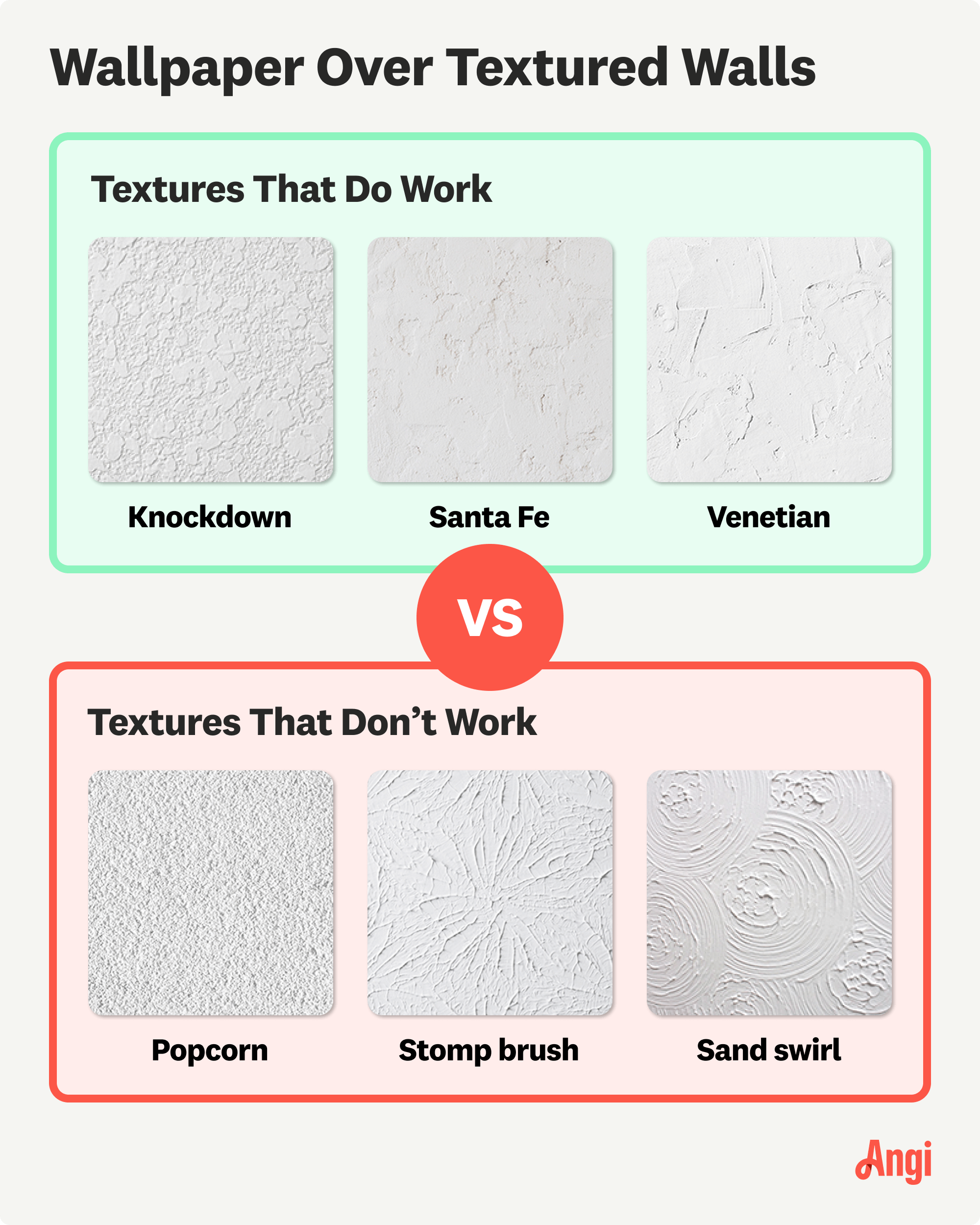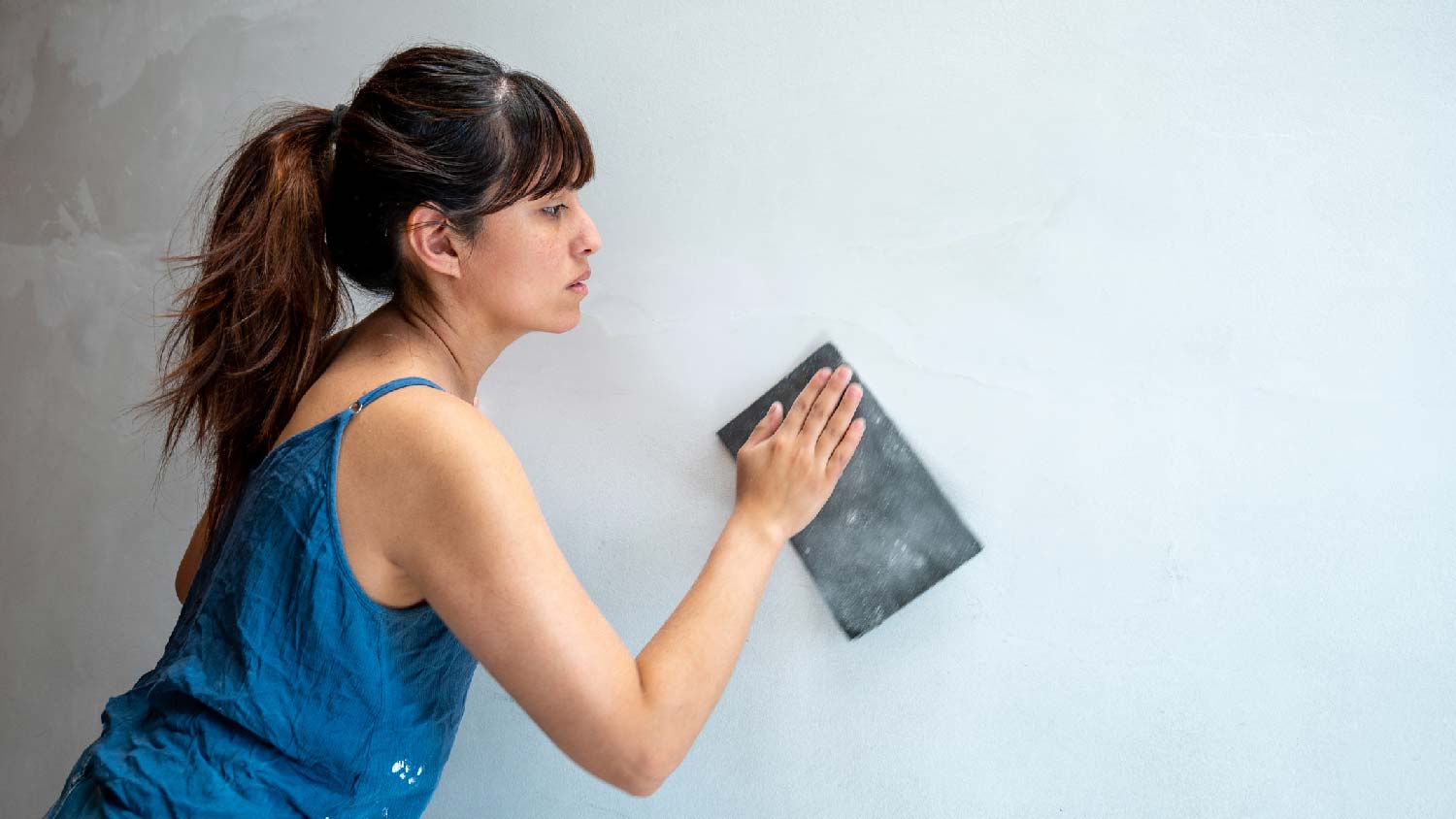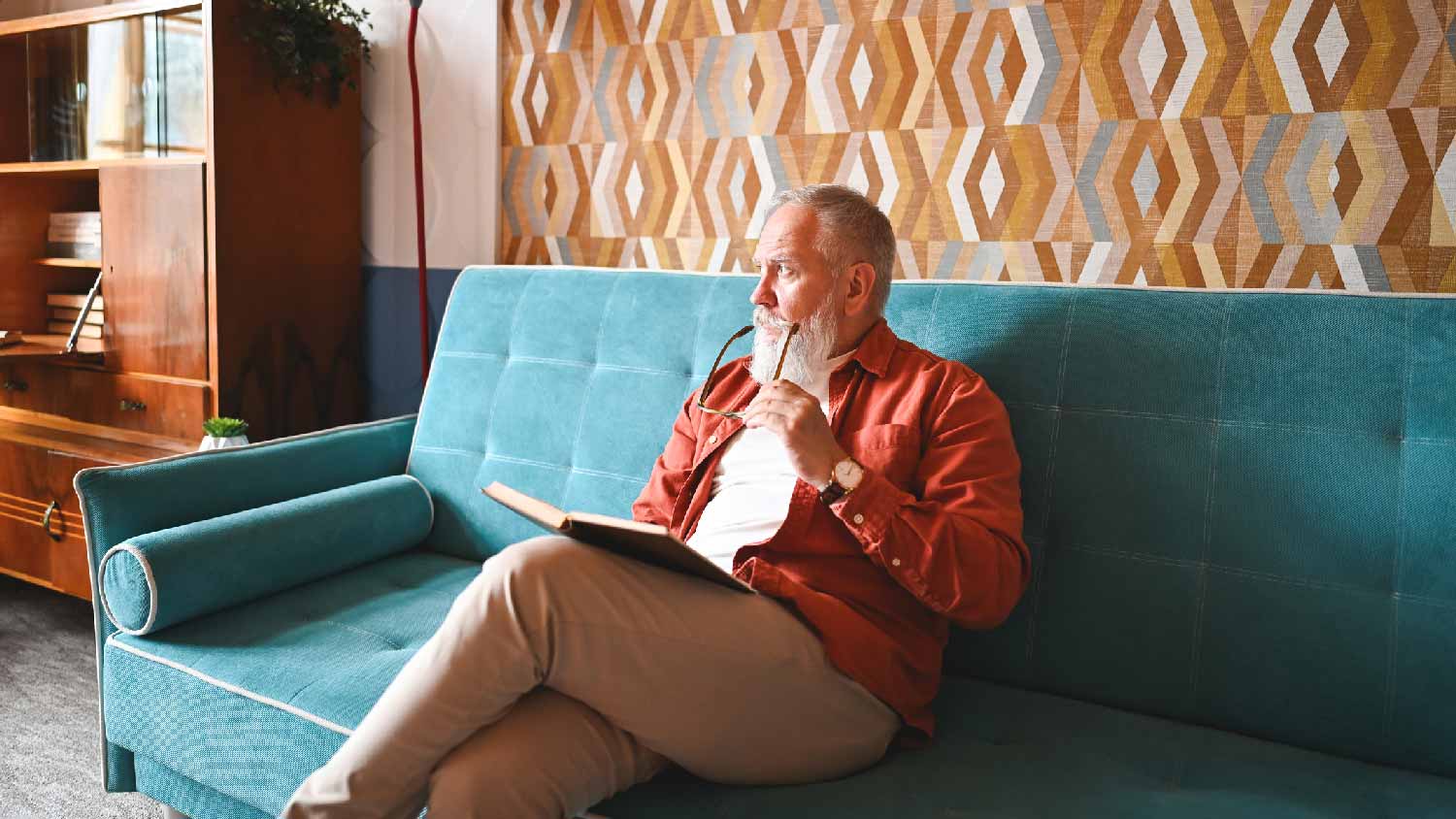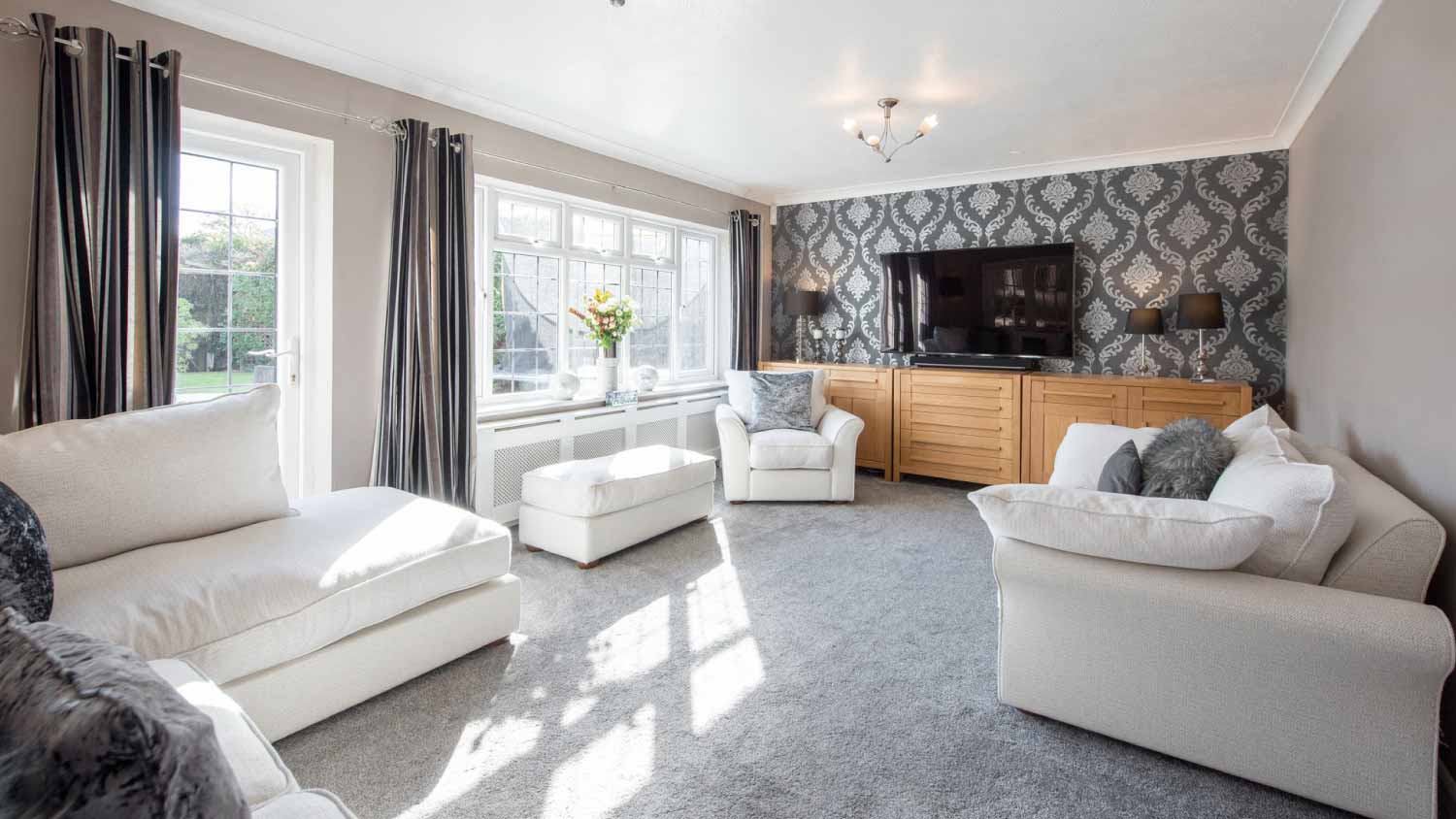Can You Put Wallpaper on Textured Walls? Here’s What to Know
The question is less “can you?” than “should you?"


You can put wallpaper on textured walls, but it depends on the type of texture (and the result still may not be as perfect as you’re envisioning).
The best types of textures to add wallpaper to are those with larger flat areas throughout, like Venetian texture, Santa Fe, and knockdown.
Thicker paper and paper with darker backgrounds and busy patterns work better for textured walls.
The most reliable way to ensure proper wallpaper adherence and a gorgeous result is to smooth your walls.
There’s nothing that dramatically changes the atmosphere of a room as quickly and completely as wallpaper. But if you’re thinking about a vibe shift in a room with textured walls, you may be second-guessing yourself: Can you put wallpaper on textured walls? The answer is, technically, yes, but in some cases, you should think twice and consider smoothing the wall first.
Can You Put Wallpaper on Textured Walls?

You can put wallpaper on textured walls, but this comes with several caveats.
If you have a type of drywall texture that’s fairly smooth already and has larger flat sections throughout, such as a knockdown or Venetian texture, the wallpaper may stick well and look fine. However, if you have sharper, more densely textured walls, like popcorn or stomp brush walls, the wallpaper won’t stick correctly. In any case, most homeowners agree that wallpaper on textured walls doesn’t look as good as it would on a perfectly smooth wall.
In some cases, putting wallpaper on a textured wall could actually present a safety hazard. For instance, in a bathroom that regularly gets humid, the spaces between the wall and the wallpaper created by the texture could create a breeding ground for mold.
What Types of Wallpaper Work Best for Textured Walls?
There are some situations in which wallpapering a textured wall can work, and the type of wallpaper you choose can increase your chances of a successful application. You should choose a thick, dark-colored wallpaper with a busy pattern because this is the least likely type to allow the wall texture to show through. Light-colored wallpapers are a no-no because they’re more likely to show the texture underneath.
It’s always a good idea to try a sample sheet on a small part of your wall to see how much the texture shows through before you commit to the entire project. Un-wallpapering a textured wall can be even more of a challenge, so it’s better to know what you’re getting into before you’ve already wallpapered half the room.
Once your wallpaper arrives, remove it from its packaging and leave it in the exact room you're installing it in for a minimum of 24 hours. This allows your wallpaper to acclimate to that room's environment, reducing the risk of shrinkage and potentially saving you money by not having to order more.
Do Peel-and-Stick Decals Work on Textured Walls?
Whether or not peel-and-stick decals will work on textured walls depends on the amount of texture on the wall and the quality of the peel-and-stick decal. More often than not, peel-and-stick wallpaper and decals are less likely to function perfectly on textured walls. This is another case where it’s a good idea to test a small part of the decal or sheet of wallpaper in an inconspicuous spot before committing to a larger project.
How to Smooth Walls for Wallpapering

The ideal surface for wallpapering is a completely smooth wall. That way, even a thin or light-colored wallpaper will show up with the beauty of its design on display rather than allowing the texture underneath to peek through.
If you have textured walls and don’t want to take any chances with your wallpaper application, you’ll have to flatten or smooth your walls first. This involves sanding down the texture or applying a coat or two of joint compound to smooth the surface. If you use joint compound, you’ll have to let it dry after applying and then sand it smooth for the best result.
These projects are DIYable but intricate, time-consuming, and messy. So, if you’re serious about changing the texture of your walls (or simply want to confirm that you’ll have to for the design you have in mind), a wallpaper installer near you can help.















